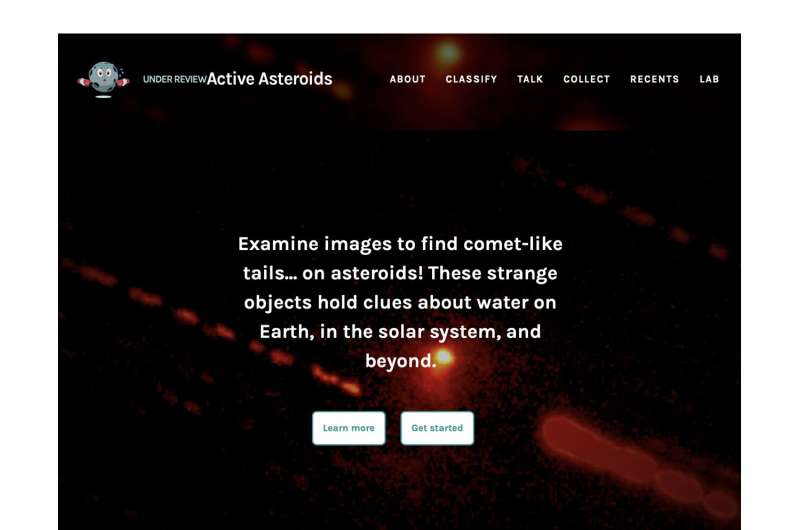The highly competitive and prestigious program, awarded to only 15 percent of the more than 2,000 yearly applicants, provides three years of funding for Chandler's research.
"With the generous help of 'Citizen Scientists'," said Chandler, project founder and principal investigator, "we hope to quadruple the number of known active asteroids and encourage study of an ambiguous population of solar system objects, knowledge of which is currently hampered due to a very small sample size."
The implications of finding more active asteroids for science and engineering are far-reaching, including:
- Helping to answer key unsolved questions about how much water was delivered to Earth after it formed, and where that water originated.
- Advising searches for life about where water—a prerequisite for life as we understand it—is found, both in our own solar system and other star systems, too.
- Informing spaceflight engineers seeking more practical, inexpensive and environmentally responsible sources of fuel, air and water.
- Appraising volatile availability for prospective asteroid mining efforts and sample-return missions.
In preparation for the launch, Chandler, an NAU Presidential Fellow, conducted the beta review phase of the project, enlisting the help of more than 200 volunteers, who completed 4,798 classifications of 295 objects.
"I am very, very excited the project is finally launching," he said. "The project has been years in the making, from selection by the NSF until this launch. Even during the preparations for the project launch, we have made several important discoveries, including discovering a new active object and uncovering information about several previously known objects. These discoveries have led to three publications in peer-reviewed scientific journals, with another one in the works right now."
As part of the testing phase, the team noticed an unusual "smudge" kept showing up around one particular object. The object was a Centaur, an icy body with an orbit between Jupiter and Neptune. The team carried out follow-up observations with other telescopes and discovered the object was active, one of only about 20 active Centaurs discovered since 1929, and published their findings in the Astrophysical Journal Letters (see related article).
Although it will depend on the number of volunteers participating and how quickly they complete classifications, the duration of the project could be up to one year. Chandler hopes to recruit thousands of volunteers to participate. No previous astronomy experience is needed; training is provided through Zooniverse, an online platform for people-powered research hosting the Active Asteroids project.
"We need to examine 5,000 square degrees of the sky in the Southern Hemisphere, which means there are many—more than 10 million—asteroid images to classify!" he said.
Co-founders of the project are Jay Kueny of Lowell Observatory and the University of Arizona, who began collaborating with Colin in creating the project when he was a senior at NAU—and who has since then also received a GRFP award from the NSF—and NAU associate professor Chad Trujillo, who serves as the project's Chief Science Advisor. Other contributors are graduate students Annika Gustaffson and William Oldroyd.
The project's Science Advisory Board consists of several eminent scientists, including Henry Hsieh of the Planetary Science Institute, NAU professor David Trilling, NAU assistant professor Tyler Robinson and NAU assistant professor Michael Gowanlock.
Ready to classify objects? Visit the Active Asteroids project site to get started.
Explore further



